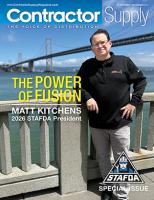AGC: Construction industry added 19,000 jobs in August
But sector's 17% unemployment rate was the highest August rate ever.
The construction industry added 19,000 jobs in August as a strike that had lowered employment in July ended, but the sector's 17 percent unemployment rate was the highest August rate ever, according to a new analysis by the Associated General Contractors of America of federal employment data released today. Continuing gridlock in Washington over infrastructure legislation and expiring tax rates threatens to keep construction workers unemployed much longer, association officials warned.
"Construction layoffs in May through July offset modest job gains in March, April and August, leaving the industry with a tragically high unemployment rate last month," said Ken Simonson, chief economist for the construction association. He pointed out that the industry's 17.0 percent rate was higher even than the 16.5 percent rate a year earlier and far above the unadjusted national rate of 9.5 percent. He noted that industry unemployment rates are not seasonally adjusted and, thus, can be meaningfully compared to the same month in earlier years but not across months.
“Construction began losing jobs four years ago, more than a year before the rest of the private sector, and the industry remains stuck in neutral at best, nine months after other industries started adding jobs consistently,” Simonson observed. He said that over the past year, 274,000 construction workers (4.7 percent of the August 2009 total) have lost jobs, spread among all five categories tabulated by the Bureau of Labor Statistics: nonresidential specialty trade contractors (123,700 or 5.8 percent), residential specialty trade contractors (63,200 or 4.0 percent), residential building (45,700 or 7.4 percent), nonresidential building (31,900 or 4.5 percent) and heavy and civil engineering construction (10,000 or 1.2 percent).
“Construction job losses will resume soon unless Congress and the White House promptly finish work on long–term transportation and water infrastructure spending bills and keep income tax rates from soaring,” said Stephen E. Sandherr, the association's chief executive officer. “Stopgap funding for transportation doesn’t provide the certainty companies need for hiring. Meanwhile, the prospect of a leap in taxes is deterring private investment.”
Source: AGC.org
















